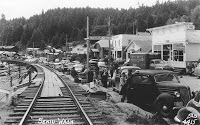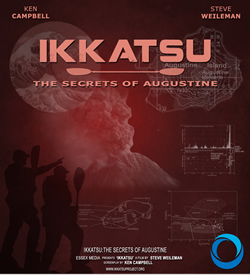Quiet Waters
 clinging to the wild shore on the edge of the continent.
clinging to the wild shore on the edge of the continent.
There’s a bar on the main highway, between Clallam Bay and Sekiu, the “Spring Tavern.” I spent St. Patricks Day there one year.
Sekiu, founded in 1870 and known as West Clallam until the turn of the century, occupies the western end of two mile-wide Clallam Bay. There was a salmon cannery here at the beginning, and later years saw the comings and goings of a leather tanning plant and distillery, along with a coal mine that operated for about five years before shutting down for good. And, of course, there’s always been a sawmill or two (or a dozen), until recently anyway.
I’ve stayed in a house a few times at Olsen’s Resort. The house is not in top repair, but its ramshackle creakiness is part of its charm. The price is right, as well. House number 52, or “Area 52.” It also goes by the intriguing title “The House of Beds,” and it’s a good story, but it will have to wait for another time.
Boats from Washington’s storied Mosquito Fleet were once regular visitors,  moving passengers and cargo into and out of Puget Sound. It was a different age then; roads had not been fully carved out of the woody interior. The Mosquito Fleet was the tangible connection to the larger world for residents of communities like Sekiu.
moving passengers and cargo into and out of Puget Sound. It was a different age then; roads had not been fully carved out of the woody interior. The Mosquito Fleet was the tangible connection to the larger world for residents of communities like Sekiu.
The section of coast between Pillar Point and Clallam Bay is the most rugged on the western straits. Cliffs run along much of the route and there is no sign of development. Streams chortle down the rocky beaches and small swells rise and fall among the rock gardens just off shore. It is a short paddle – about 9 miles – but one of the best in the State.
By 1920, Sekiu boasted a school and a cemetery, saloons and rooming houses, along with various other established commercial interests. The times have boomed and busted more than once since then, and Sekiu these days mostly lives up to its native meaning, “Quiet Waters.”










